Time-lapse of Electrical Guitar Construction thusfar, sorry about the watermark, i’ll try to fix it in part 2, open to suggestions with free software:
I. INTRODUCTION
The following report will entail the specifics of the Final Project in MCEN 5228: Aesthetics of Design, instructed by Professor Jean Hertzberg. The report will detail the documentation from both pre-COVID-19 as well as post-COVID-19 processes, as they are of importance for the overall timeline and culmination of learning experience garnered from the project. Moreover, this resembles a real-life scenario similar to a company in budgeting season, finding meaningful work to justify salaries amidst unfortunate times likes these. To begin, dating back from 2/19, the project needed to satisfy the following requirements:
- Deliverables will be a functional artifact that satisfies an aesthetic of your choice, plus documentation
- The artifact must be dynamic or complete a task (demonstrating form/function balance)
- Has to be aesthetic
At the time, my friend was thinking of building an electrical guitar but recently graduated and couldn’t use the facilities’ resources on campus (turns out later I couldn’t either). After discussing the class with him, It presented a possible opportunity to help him make the electrical guitar, while having both a great function and aesthetic balance. We decided to re-purpose an already existing guitar that he had (figure 1) by replacing it by an electrical body that I would be making with the CNC ITLL Machines, by importing CAD files to make the cuts for the pickups, bridge, neck, and electrical components.
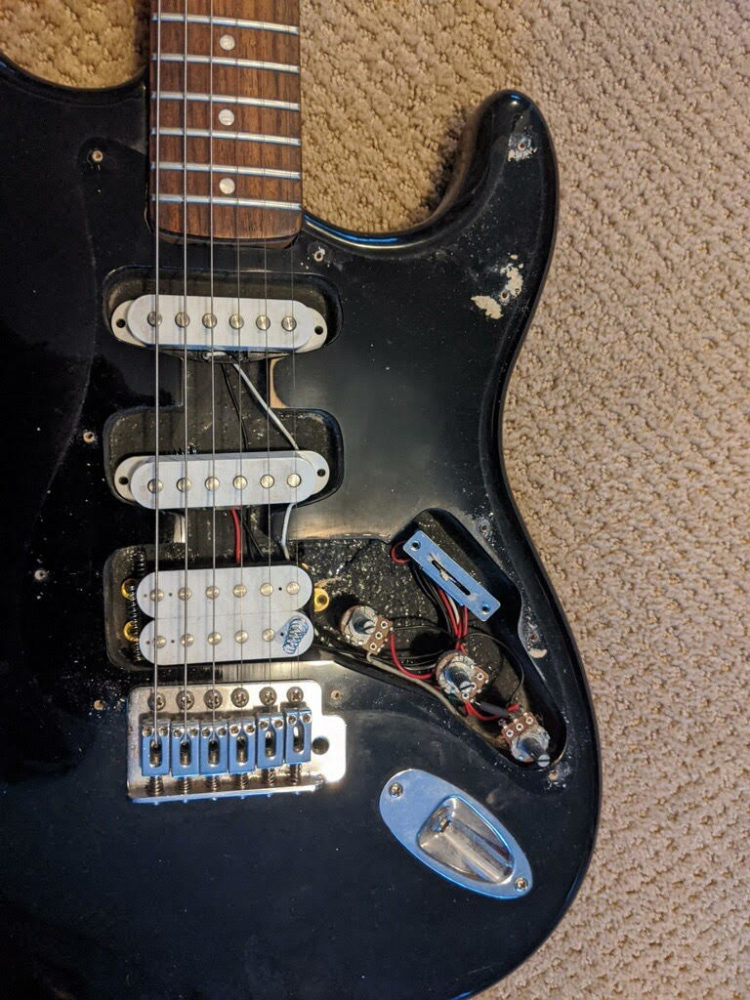
Figure 1: Friend’s current electrical guitar that I would be replacing with my own hand-made body, re-purposing the other components.
II. INITIAL VISION
The overall vision would refurbish the guitar in figure 1, mainly the body which is not aesthetically pleasing currently, and then overlaying that aesthetic to all the other components. The aesthetic itself of the body, then is very important and a number of aesthetics have been played in my mind. Looking my planned aesthetic, I hope to combine a streamlining aesthetic with a modern matte black aesthetic, both considered at their respective points as very modern aesthetics.
Streamlining aesthetic (figure 2,3) has a very shiny, curvy, and aerodynamic look to it, naturally intrinsic to electrical guitars I feel. The aesthetic emerged in the 1930s and was used in industrial design, namely: railroad locomotives, telephones, toasters, buses, appliances, and other devices conforming to the sleek and modern impression. The electrical guitar itself was developed in 1932, so I believe this type of aesthetic is very fitting for such a piece.

Figure 3: Motor Car No. 9 (without tail fin) with streamline aesthetic. Very smooth and soft aesthetic that can would work amazing on an electrical guitar. Source[1]: https://www.nybooks.com/daily/2013/11/13/streamline-dreamer/

Figure 4: Another Streamline moderne automobile in the 1930s. Source[2]: https://www.hemmings.com/blog/2014/05/29/1930s-auto-design-art-deco-and-streamline-moderne/
My thought behind combining a matte black modern aesthetic onto what once was considered a very modern aesthetic will try to infuse both modern aesthetics into my project. Matte finish are similar to flat finishes with non-glossy finish to diffuse reflection. However, the two aesthetics do contrast each other in some ways as streamline aesthetic is shiny, so I imagine both will exist but not be mixed on the electrical guitar (Figure 4).

Figure 4: There is a separate shiny piece that contrasts with the matte black finish of this particular electric guitar, something I hope to do better.
III. INITIAL DESIGN
Below (Figure 5) are some previous CAD renderings of the guitar body that I was planning on CNC Machining with the ITLL lathe machines. By placing my CAD drawing into their program, the cuts could have been done overnight. By hand and with limited power tools, it became a much harder scope detailed later.
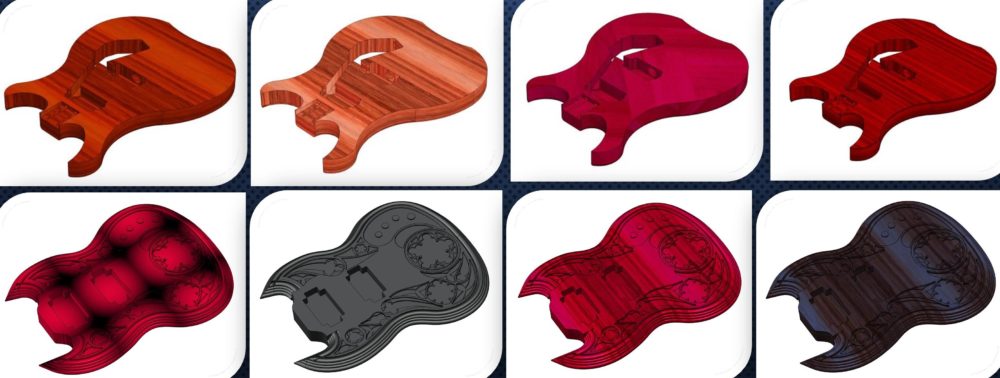
Figure 5: The top row is the rendering I had chosen to outline my guitar pickups with.
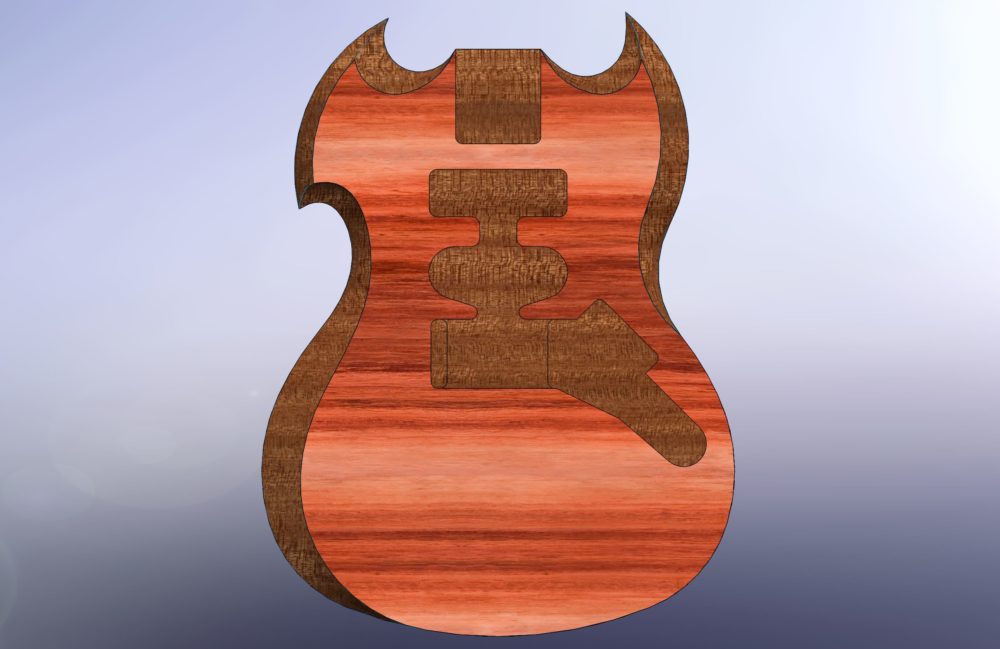
Figure 6: Without aesthetic rendering, this is what the guitar looks like, and was ready for ITLL CNC cutting.
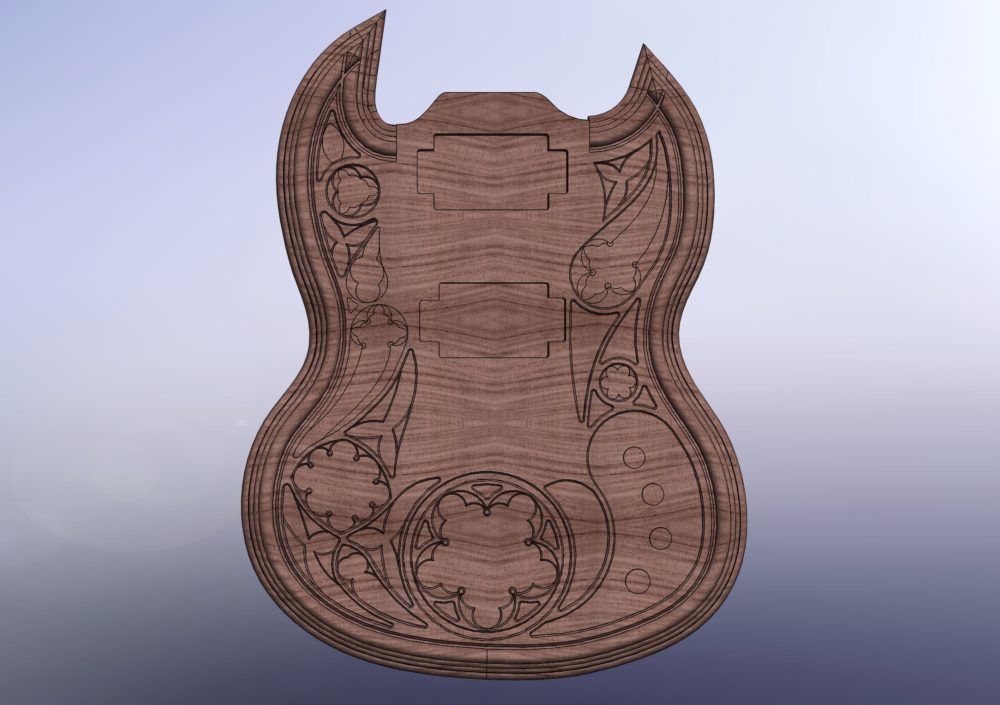
Figure 7: Another CAD I made, but was scrapped due to the complexity that it had.
IV. DESIGN CHANGES AMIDST COVID-19
To be concise, here were a number of manufacturing logistics that had changed due to COVID-19 and how I plan to implement them:
- (1.) I can no longer use ITLL CNC Machines to carve the body and the pickups.
- Alternative: Hand-make the body, carve with hand saw or band saw. Sand edges down.
- For pickups: use hand-drill and saw afterwards. Try asking for a router and router bits if anyone has, or a router kit/router template for an electrical guitar in Slack.
- Alternative: Hand-make the body, carve with hand saw or band saw. Sand edges down.
- (2.) I can no longer use ITLL Laser Printer for the pick guard.
- Alternative: Design a more geometric pick guard, perhaps in the shape of a trapezoid that sits under the strings. Pick-guard material will be sourced from: https://www.wdmusic.com/wd-custom-pickguards-material-details.html. But will re-purpose sheet metal If found.
- (3.) Body material will be re-evaluated, since this will now be a hand-made electrical guitar body.
- I will use an inexpensive ash-body wood or plywood material as I am hesitant that my project will meet my initial vision’s standards.
- (4.) The original stretch goals no longer exist.
- The stretch goal is now replaced with the initial goal of this project, to refurbish and have a functional electrical guitar, meeting the previously stated requirements.
- (5.) The Aesthetic will be minimalist
- I do not have the purchased lacquer or paints. Whether or not I can source these materials will largely affect the overall aesthetic of the guitar. For now, it will be labeled as minimalist, using what I can to produce something simple yet eye-appealing.
V. MANUFACTURING PROCESS
Like many others, COVID-19 has affected my project and de-scoped it from it’s original vision. The main issue was having something functional/completes a task/dynamic at the end of the project. I had been looking at Guitar Wood Experts and looking to order soon[3], their woods range from $25.00 to $200.00, but they did not respond to my order, so I had to find a cheap $20 piece of Plywood that my friend had. It took 10 hours alone band-sawing and outlining the frame of the body itself (figure 11) out of the hard and inexpensive plywood I have outlined the cuts needed for the neck and bridge pickup, bridge, and electrical components that go into the guitar body itself, from the SolidWorks file that I had, in previous. Hand-making the rest of the guitar will be the equivalent of a 50 hour work week, that I do not think is plausible, given I have 3 other spring graduate courses that have also had major changes, largely not in benefit, as they are mainly engineering courses. What I do have – is CAD renderings of the electrical guitar body that I was originally going to cut, with the ITLL CNC machines.
My current progress on the construction of the electrical guitar body is at the top of this post. As you can see, it has been difficult with rudimentary hand tools. Below I measured the current depth that the neck of the old guitar had with the previous electrical guitar body and marked that depth on my drill bit accordingly (Figure 6-8).
Figure 8-10. Finding the depth to drill into the guitar body.
After the holes were drilled into the pickup areas, I would be drilling into the holes with wood boring bits (figure 11).
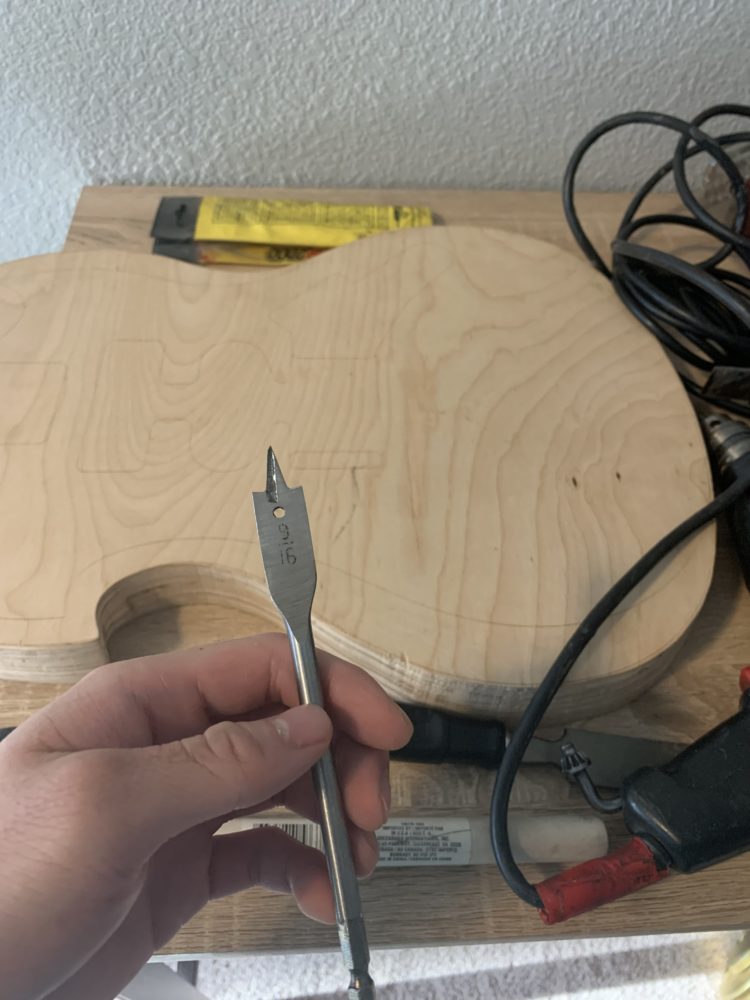
Figure 11: Electrical Guitar Body, and if you look closely, an outline of the guitar pickups
The following are the tools that I had used in the video: Makita Drill, drill bit set, wood boring set, athletic tape, ruler, pen, scissors, sand paper, Black and Decker sander, Rotorrazor Saw, Chisel, Hammer, Bandsaw, 25lb dumbbell as a camera stand, headlamp.
VI. NEXT STEPS AND CONCLUSION
As of now, the guitar still needs more hand-work in order to get finished. I predict it will be another 30 hours or so, which I do not know if I have. I will try my best. Without the construction being fully done, it would not make sense to start painting over the guitar for the aesthetic portion of this class. If I did paint it before finishing the construction, finishing the guitar on my own time would not be great, as I would be sanding over paint and having different layered paint. lacquer, and gloss coats over my guitar. For now, I will keep pushing on, and then compile everything into a video of what I have done so far, much like the time-lapse above, without the annoying watermark, ideally.
VII. REFERENCES
- [1] Filler, Martin. “Streamline Dreamer.” The New York Review of Books, www.nybooks.com/daily/2013/11/13/streamline-dreamer/.
- [2] Hemmings.com, www.hemmings.com/blog/2014/05/29/1930s-auto-design-art-deco-and-streamline-moderne/.
- [3] “Home.” Guitar Wood Experts, guitarwoodexperts.com/electric-guitar-wood/?sort=featured&page=4.

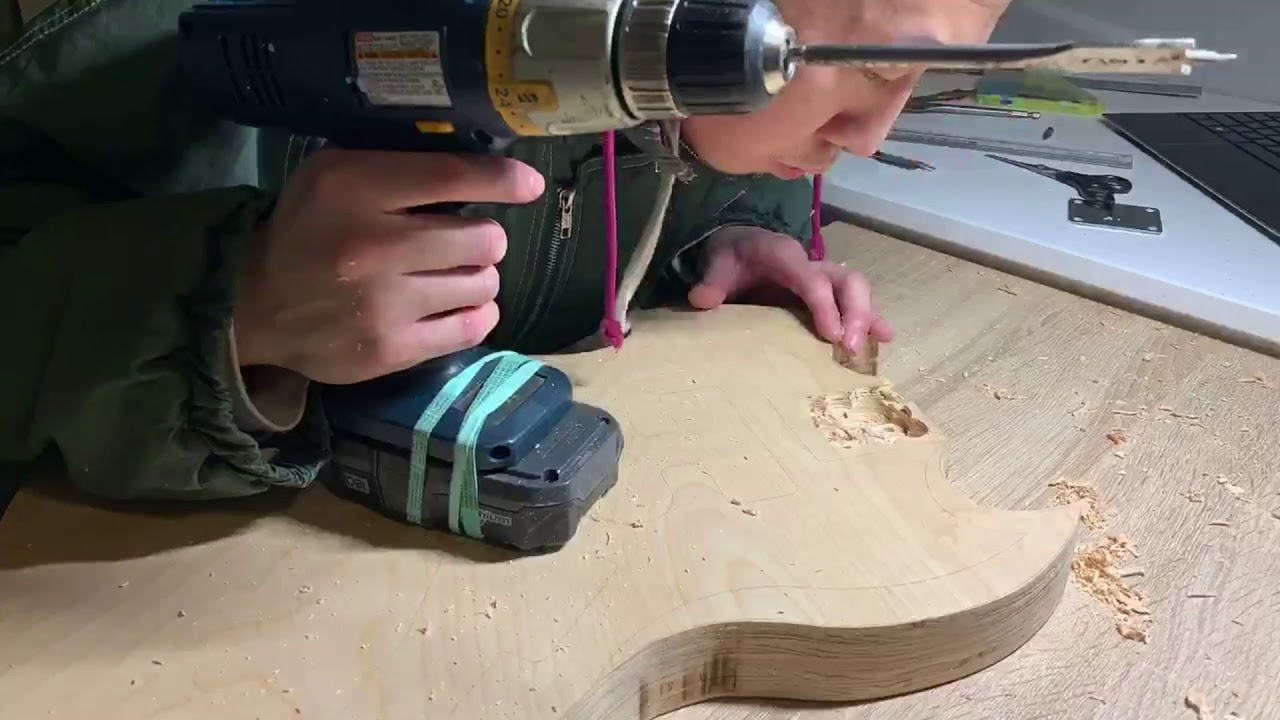
7 Comments. Leave new
Hi Will,
I really like that you decided to get out of your comfort zone with this project and created something really cool!
if you had infinite time and resources how far do you think you would have taken this project in terms of complexity?
The software I use is OpenShot Video Editor. It’s free and has worked well for all my projects in the past. And no watermark!
I think it’s super impressive that you made your own machine shop in your house to continue working on your project.
Your documentation was really well done, the video almost seems like something you could put on a DIY youtube channel.
Will,
Statement of meaning:
I really enjoyed the time lapse video. I think it did a great job showing your process and has a nice aesthetic of it’s own.
Neutral question:
Will you continue this when the facilities open back up?
I find it really impressive that Will pushed through lack of access to a machine shop and machined the desired holes in a hardwood guitar body with hand tools and a drill.
Hey Will,
Great inspiration. Great job so far despite the whole pandemic. I can understand the restrictions and the timeline, but you have done whats needed so far. Good thought on the whole compilation. Would love to see the final product though, I am a fan of electric guitars myself. You can also make a small guide on how to make a hand-made guitar DIY project, and it can be used later as a building step for someone who wants to do the same. I hope you complete things eventually and come up with an amazing product. All the best.
Very in depth explaination Will! I would love to see how it sounds once it is finished.